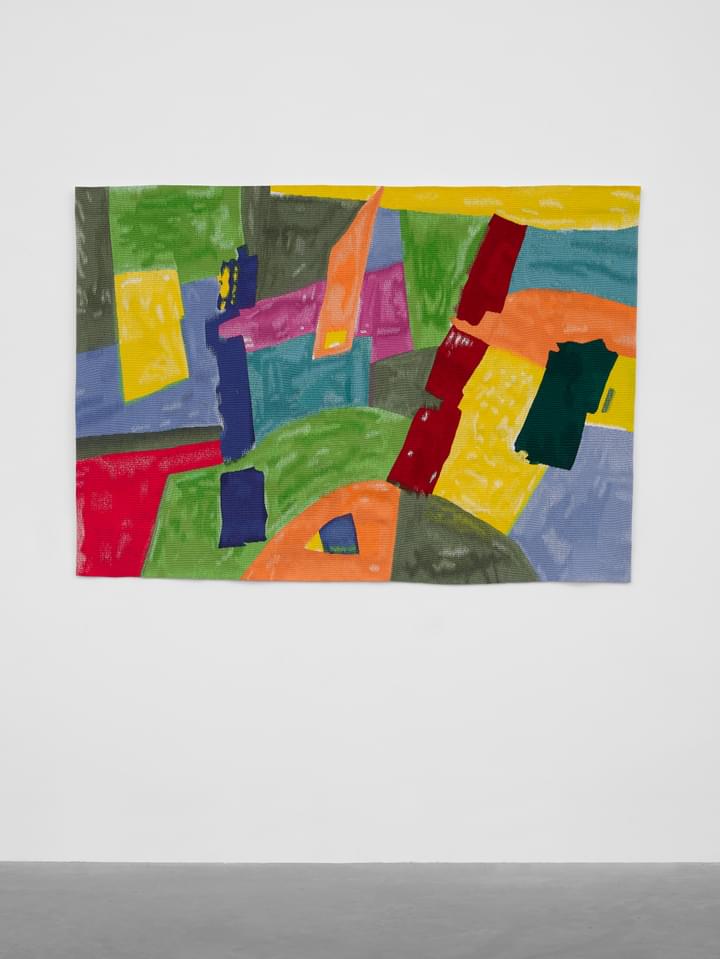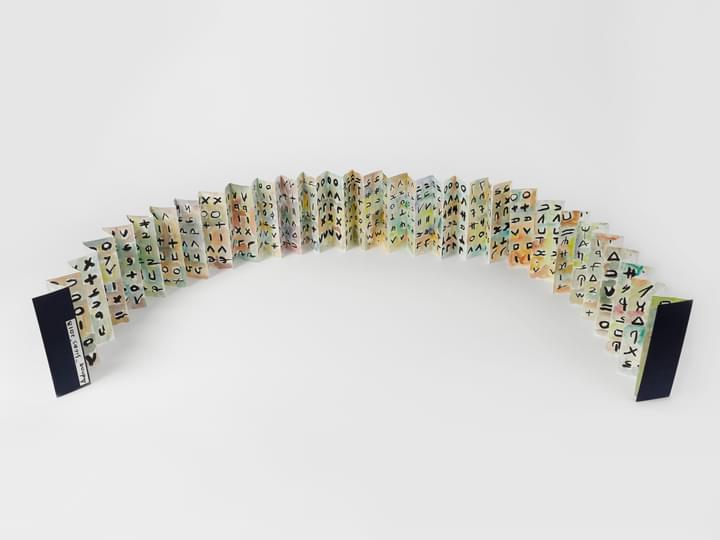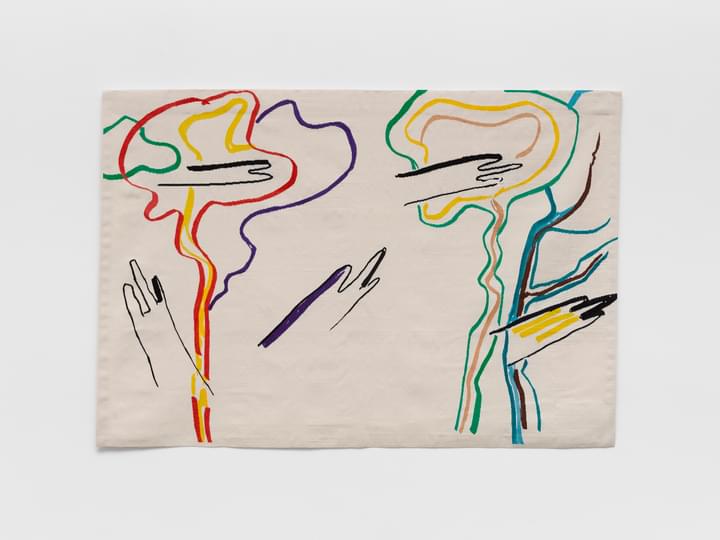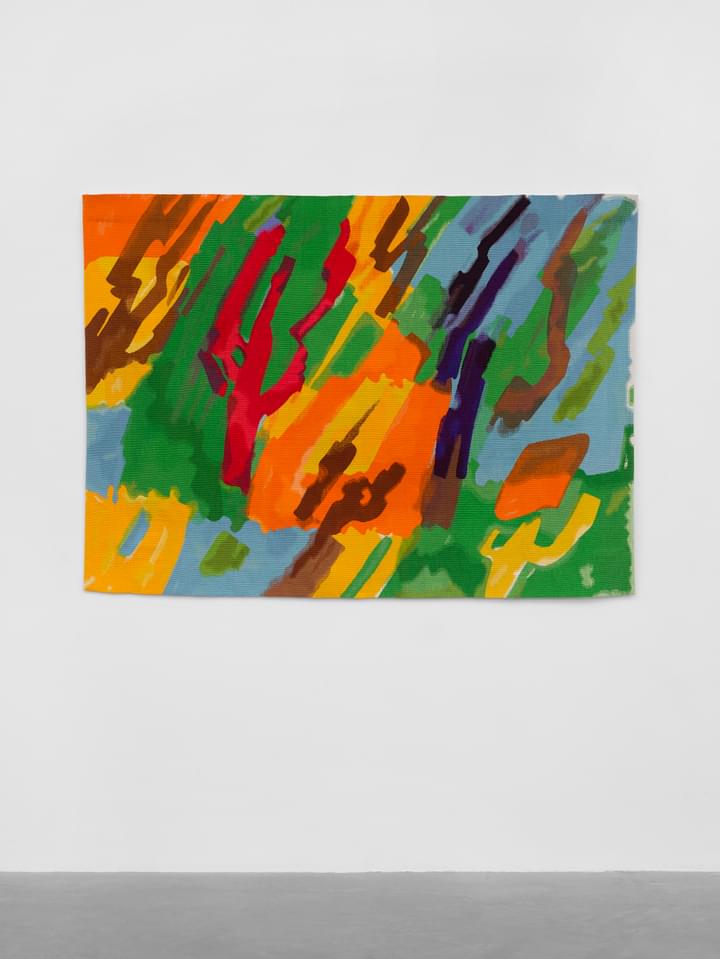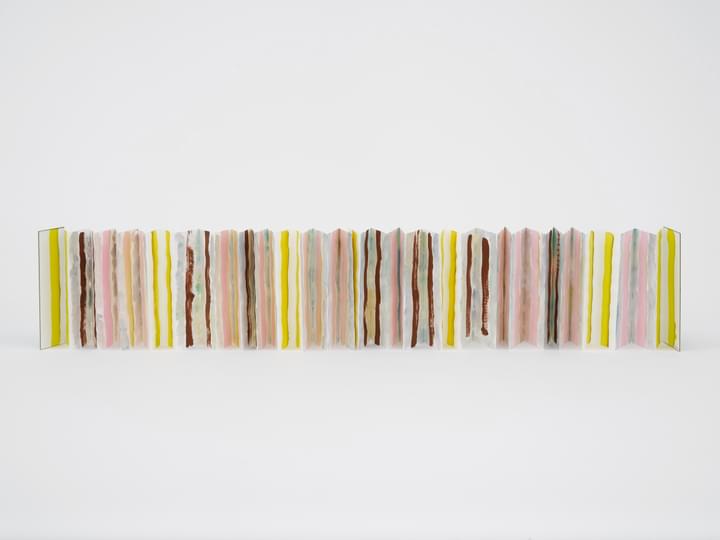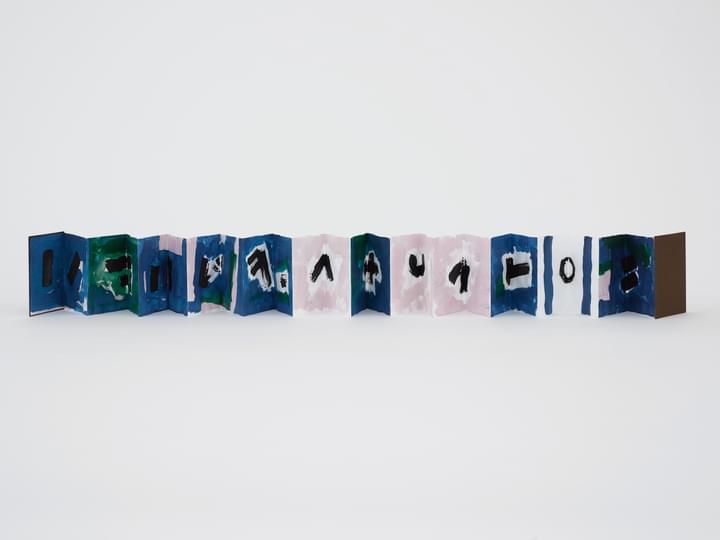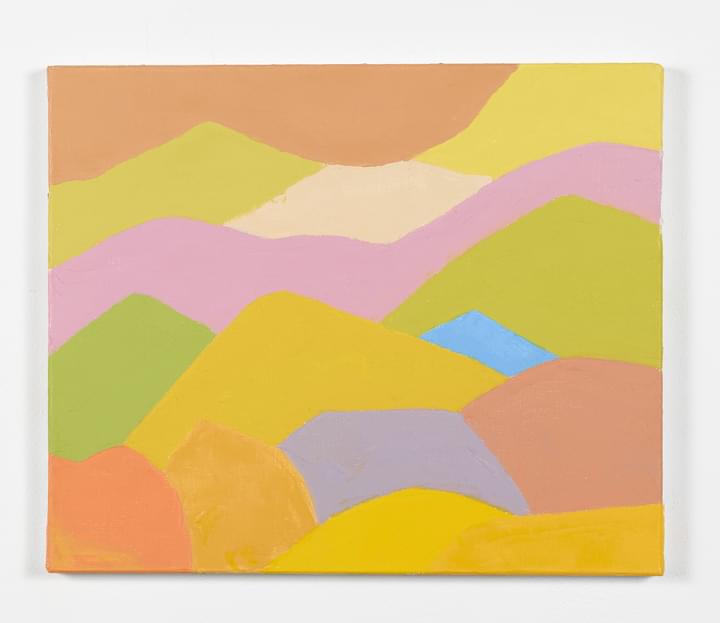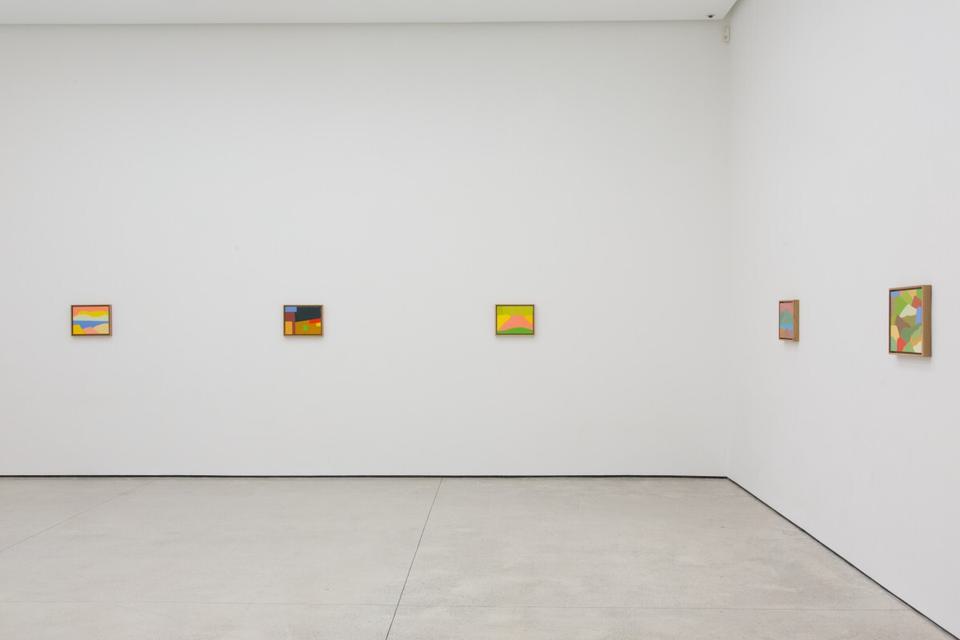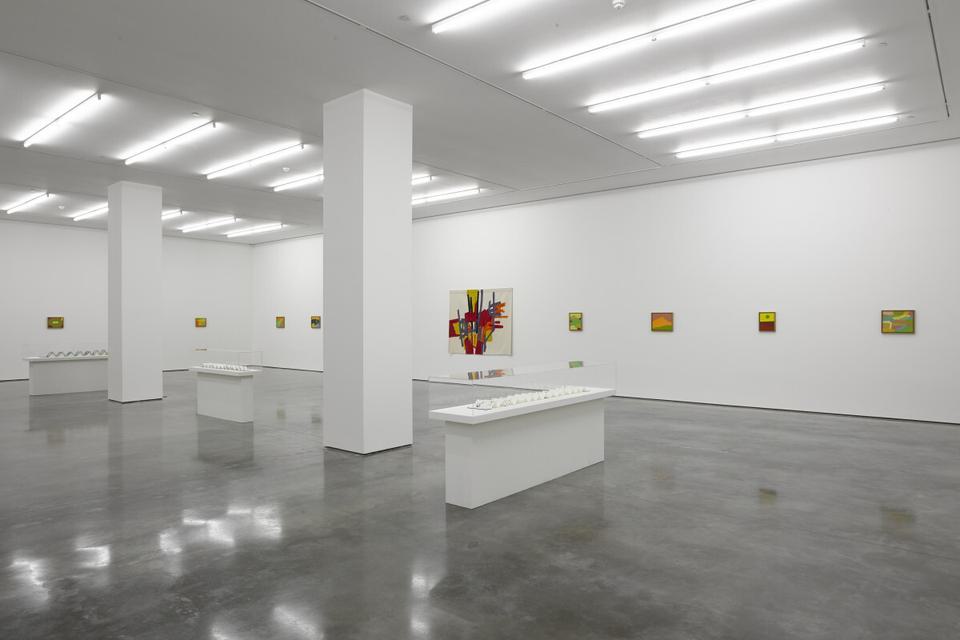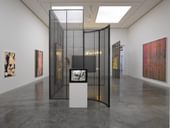Adnan, who was renowned as a writer of poetry, fiction and journalism, came to widespread prominence as a visual artist through her inclusion in Documenta 13 (2012), for colour field compositions that recall Nicolas de Staël’s abstract landscapes, or the mystical quality of paintings by Paul Klee and Wassily Kandinsky. In common with her writing, Adnan’s imagery accrues meaning when read in close range, as a multitude. Geometric forms rendered in flat swathes of pure pigment suggest signs and symbols, encapsulating the spirit or memory of a place rather than its terrain. Indeed, other inspiration Adnan cited were the photographers of the American West, Ansel Adams and Edward Weston, for their ability to instantaneously and starkly capture moments in time. As curator Carolyn Christov-Bakargiev notes, Adnan’s paintings only appear as landscapes from a distance.
The plainness of Adnan’s pictorial language resulted from working at speed, usually completing a painting in one shot. She would lay a pre-stretched canvas flat on the table, sitting like at a writing desk, and squeeze oil paint straight from the tube, neither mixed nor diluted but applied with a palette knife in decisive swipes. The small scale of her works equates to the dimensions of a book – portability being key to a life that shifted between countries, languages and cultures. Born in Beirut to a Greek mother and a Syrian father, she grew up speaking Greek and Turkish at home, Arabic on the street and French at school. She left to study philosophy at the Sorbonne in Paris, then moved to America in 1955, where she attended U.C. Berkeley and Harvard. It was not until her mid-thirties, while teaching Philosophy of Art and Aesthetics at Dominican College in San Rafael, California, that she started painting. The head of art, Ann O’Hanlan, asked how she could teach philosophy of art and not practice art herself. Adnan replied, ‘Because my mother said that I was clumsy.’ ‘And you believed her?’ At first she used crayons, scraping them flat over remnants of paper from the art department before using up the ends of oil tubes with a knife. This new language of spontaneous gesture, infused with Californian light, offered a liberation from the constraint of writing in the formal language of her upbringing. ‘I didn’t need to write in French any more’, she said, ‘I was going to paint in Arabic’.
Adnan returned to Beirut in 1972, at the heart of an energetic artistic community on the brink of deadly conflict. This period saw the emergence of the horizon in her paintings, as in Train in the Snow (1975), where tight blocks of oils left no trace of canvas visible. She had taken on the role of cultural editor for the French-language daily newspaper Al Safa, which gave her a platform for fearless editorials; she started having her poetry published in Arabic; and had her first solo exhibition at the avant-garde Dar al-Fan space in 1973. The ensuing civil war she described as ‘a huge game of coloured blocks consumed by the sun’ in the novel Sitt Marie Rose (1977), whose publication provoked death threats, and left Lebanon once again.
Adnan brought together painting and poetry in her leporellos, folded books that are designed to be handheld, like a talisman, but which stretch to several metres long. Using tiny brushes, Adnan filled the paper with images and words in watercolour: landscapes bleed into transcriptions from contemporary poets writing in Arabic, including Mahmoud Darwish and Yusuf al-Khal, as well as fragments of Adnan’s own writing. The format, much like a scroll, demands specific viewing conditions. Here, painting is experienced durationally. Unlike wall-based works, a leporello is intended to be folded up and put away, and thus its contents are not always available to the eye. The temporaneous nature of the pages, extending and retracting like an accordion, creates a sense of delayed gratification.
Adnan’s tapestries present another connection between writing and painting – as she said, ‘a tapestry is one line after another’. Taking inspiration from the flat weave of rugs and kilims, and encounters with weavers in Tunisia and Egypt, she started experimenting in tapestry making in San Francisco, in collaboration with artisan Hal Painter, later with studios in France and Beirut. Sewn works such as Marée basse (1967–2015) often have two dates attributed to them, acknowledging their fabrication over expanses of time, the smoothness of the wool and slower pace of production accommodating often wilder, agitated designs.
In Sausalito, California, Adnan focused on the view of Mount Tamalpais, which was visible from the windows of her home. Like Cézanne’s relationship with Mont Sainte-Victorie, the mountain became an immutable reference point that she drew incessantly, capturing its changing moods at different times of day, in all seasons. This series culminated in a book, Journey to Mount Tamalpais (1986), a meditation on the relationship between nature and art, in which the artist declares: ‘My spirit is anguished by colour. Colour is the sign of the existence of life.’
Adnan’s late, luminous series of untitled paintings were made in her Paris apartment. Like after-images, elements are irradiated and condensed. Geometric shapes float without touching, while sea, land, sky, a persistent horizon are suggested in bands of pure colour – cadmium against cobalt, Naples yellow against grey, colours which she conceived of as ‘metaphysical beings’. Adnan’s idea of vision as ‘multidimensional and simultaneous’ is inherent to these works, a transcendent meeting place in which many experiences coalesce.



